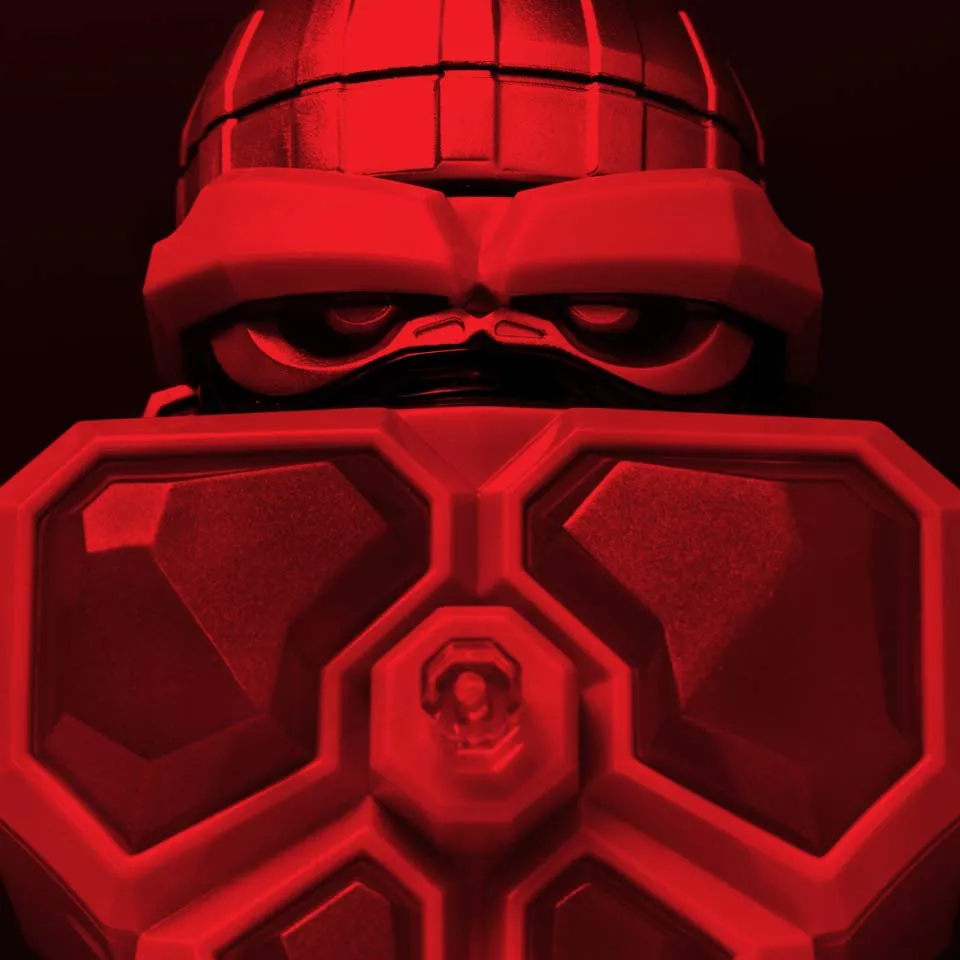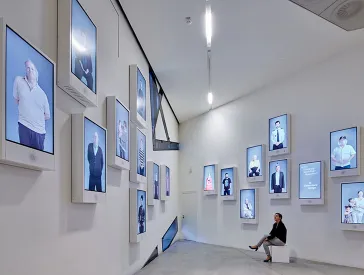Rituals
Article in the Exhibition Catalogue GOLEM
Christopher Lyon
Charles Simonds’s Birth, 1970, a ritual enacted by the artist at a claypit in New Jersey, is documented both by a series of ten color photographs, resembling a film-still sequence, and by a brief film. The photos offer a closer view, but the film, made on an overcast day, is more dramatic: one sees Simonds’s body emerging as if from the birth canal at the terminus of what might appear as an immense vaginal opening. As his body becomes visible and he begins to push against the earth to rise up, the sun miraculously appears, bathing the scene in golden light.
Two subsequent rituals, performed by Simonds, Landscape<-->Body<-->Dwelling, 1970, and Body<-->Earth, 1971, were reprised, and recorded by Rudy Burckhardt as 16mm color films, in 1973 and 1974, respectively.
Though they were photographically documented, these were not performances, but experiences created by the artist for himself. His aim, he has explained, was to “give me the experience of what I’m believing or thinking […]. It’s like an enactment of what I feel […] that gives it back to me in a very visceral way.”1
This existential dimension of the work is given resonance by powerful psychological associations. He is both declaring independence from family ties and also embracing a status as “homeless”; the emotional drive underlying his work from this point on will be, as he puts it, “making home”—for the Little People but also himself. Thus the existential and the psychological converge on a singe point: “home,” given form as “dwellings.”
Viewers of the films are engaged not only by the intimate experiential aspect of the works but by deeply rooted archetypal associations; the “soft, wet, pink, sticky clay,” as Simonds describes it, is the malleable material from which God or the gods made man in Sumerian, Jewish, Greek, and Muslim mythology, and from which Rabbi Lowe made the Golem.
As the titles of these works, with their arrows pointing both forward and back, might suggest, Simonds’s art is cyclical and reflexive. Having undergone a ritual rebirth, the artist in turn becomes the earth upon which the Little People’s dwellings begin to appear. In the brief Body<-->Earth, 1974, we are shown a primeval landscape, whose scale we cannot easily comprehend, followed by close-ups where clay-covered body and viscous earth are scarcely distinguishable. But it is Burckhardt’s 16-minute Landscape<-->Body<-->Dwelling, 1973, that most effectively dramatizes the artist as god, creating a world both from himself and outside himself, as the Kabbalists so radically supposed God Himself to have done.
- Oral history interview with Charles Simonds by Christopher Lyon, 2012 July 31, Archives of American Art, Smithsonian Institution. ↩︎
Birth (Filmstill) Charles Simonds, USA, 1970 38.5 x 250 cm Courtesy of Charles Simonds
Citation recommendation:
Christopher Lyon (2016), Rituals. Article in the Exhibition Catalogue GOLEM.
URL: www.jmberlin.de/en/node/4692

Online Edition of the GOLEM Catalog: Table of Contents
The Golem in Berlin: Introduction by Peter Schäfer
Chapter 1
- The Golem Lives On: Introduction by Martina Lüdicke
- My Light is Your Life: Text by Anna Dorothea Ludewig
- Avatars: Text by Louisa Hall
- The Secret of the Cyborgs: Text by Caspar Battegay
Chapter 2
- Jewish Mysticism: Introduction by Emily D. Bilski
- Golem Magic: Text by Martina Lüdicke
- Golem, Language, Dada: Text by Emily D. Bilski
Chapter 3
- Transformation: Introduction by Emily D. Bilski
- Jana Sterbak’s Golem: Objects as Sensations: Text by Rita Kersting
- Crisálidas (Chrysalises): Text by Jorge Gil
- Current page: Rituals: Text by Christopher Lyon
- A Golem that Ended Well: Text by Emily D. Bilski
- On the Golem: Text by David Musgrave
- Louise Fishman’s Paint Golem: Text by Emily D. Bilski
Chapter 4
- Legendary Prague: Introduction by Martina Lüdicke
- Golem Variations: Text by Peter Schäfer
- Rabbi Loew’s Well-Deserved Bath: Text by Harold Gabriel Weisz Carrington
Chapter 5
- Horror and Magic: Introduction by Martina Lüdicke
- Golem and a Little Girl: Text by Helene Wecker
- The Golem with a Group of Children Dancing: Text by Karin Harrasser
- Bringing the Film Set To Life: Text by Anna-Carolin Augustin
- Golem and Mirjam: Text by Cathy S. Gelbin
Chapter 6
- Out of Control: Introduction by Emily D. Bilski
- Golem—Man Awakened with Glowing Hammer: Text by Arno Pařík
- Dangerous Symbols: Text by Charlotta Kotik
- Be Careful What You Wish For: Text by Marc Estrin
Chapter 7
- Doppelgänger: Introduction by Martina Lüdicke
- From the Golem-Talmud: Text by Joshua Cohen
- Kitaj’s Art Golem: Text by Tracy Bartley
- The Golem as Techno-Imagination?: Text by Cosima Wagner
See also
- GOLEM: 2016, online edition with selected texts of the exhibition catalog
- GOLEM: 2016, complete printed edition of the exhibition catalog, in German
- Golem. From Mysticism to Minecraft: Online Feature, 2016
- GOLEM: Exhibition, 23 Sep 2016 to 29 Jan 2017
